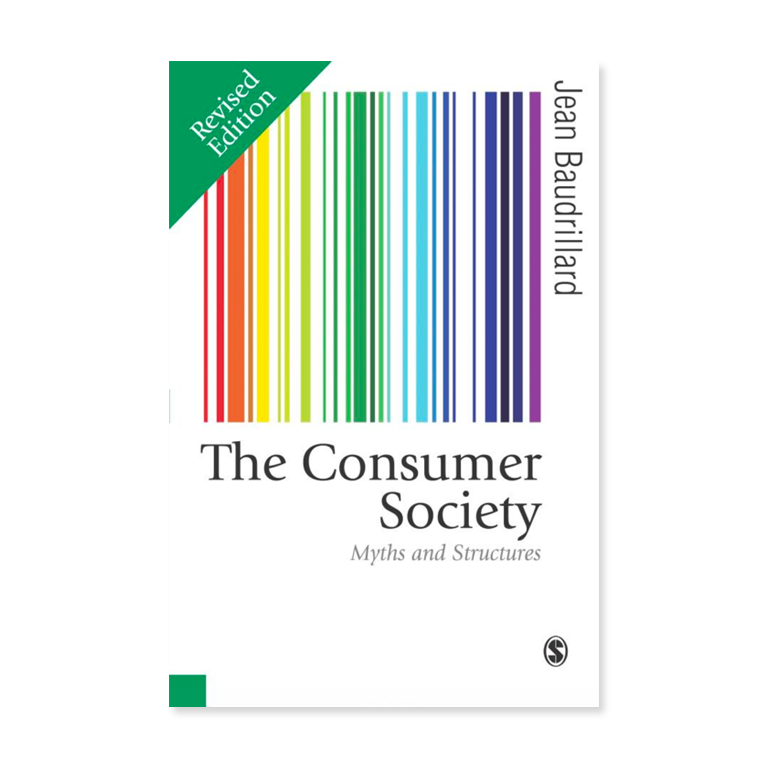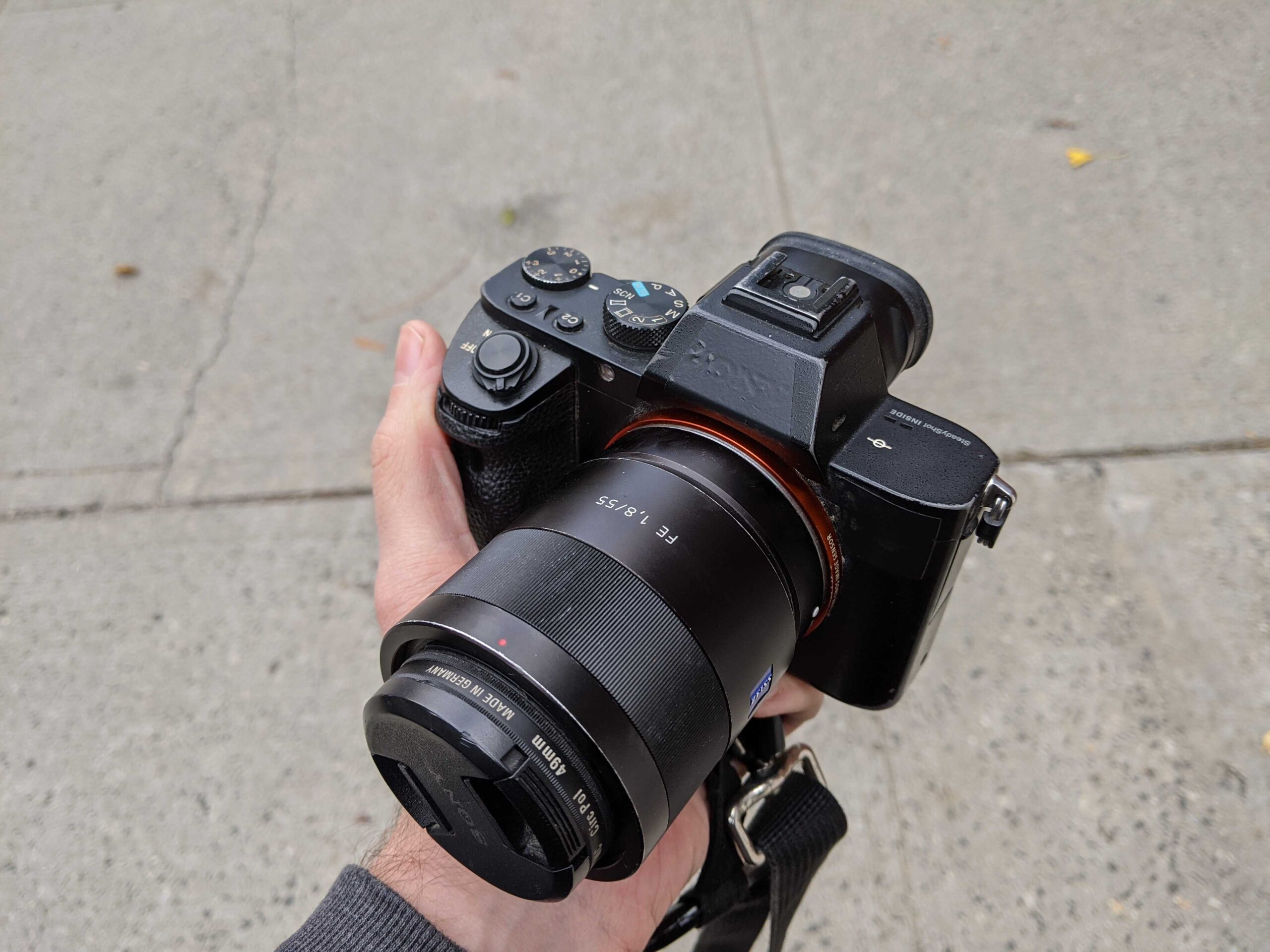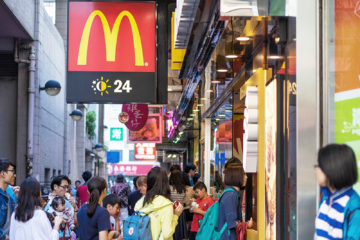I want to premise by saying I thoroughly enjoyed reading Baudrillard’s The Consumer Society. While I have a lot of criticism of the book, it is not specifically the concepts that I find to be at fault – it is the extremity of the claims.
Building his own Straw Man
It is telling that Baudrillard premises one of his chapters with the “autopsy of Homo Economous.” Poor Homo Economous continues to be the punching bag for many of us because he is the quintessential example of what happens when an intellectual cluster takes one aspect of humanity, pushes it to the extreme, then builds a model around this extreme case.

This is what Baudrillard has done in The Consumer Society. For him, the symbolic value of objects – in particular the way they symbolize hierarchal relationships between members of society – is taken to an extreme enough form that it lays the basis for his view of society. He argues not that the symbolic value of objects is important, but that it is so important that nothing else matters. This extreme interpretation distracts from and undermines an otherwise fascinating discourse, so while I’ll argue against it later, I first want to capture the insightful arguments that Baudrillard makes.

Consumer Society has invented happiness
“Happiness, written in letters of fire behind the least little advert for bathsalts or the Canary Islands, is the absolute reference of the consumer society: it is the strict equivalent of salvation.”
Baudrillard opens his fourth chapter with a strong argument for the modern invention of happiness.
Happiness has been socially crafted as a part of a larger myth that is necessary for the perpetuation of the myth of modern democracy. It can be canonized as a universal good in liberal institutions such as France’s “Declaration of the Rights of Man and of the Citizen” (and, about a decade before, the US’s Bill of Rights).
In modern times, a distinctly visual and individualistic form, happiness is represented in advertisements and sold to us as the ending in popular movies. This visual focus of happiness is key. With this focus, happiness could begin to be measured in visual terms, “equality before the Object and other manifest signs of social success and happiness.”
To this day, liberals defend their belief based on these visible, material terms – be they shallow manifestations such as smart phones, tvs, and cars, or deeper ones, such as life expectancy or child mortality (which generally is supported by improving access to material objects such as medicine and food or by improving material standards in things like hygiene).
The emphasis on the material aspects of happiness, distorts our ability to see inequality because, “Need being indexed to use-value, we have here a relationship of objective utility or natural finality, in the face of which there is no longer any social or historical inequality. At the meat-and-drink level (use-value), there are no proletarians, no privileged individuals.”
Importantly, what we don’t see is the way that our consumption patterns are a reflection of inequality in society.

How symbolic consumption perpetuates social stratification
“One of the contradictions of growth is that it produces goods and needs at the same time, but does not produce them at the same rate”
Baudrillard’s argument is long, but his idea is simple: consumers consume for the same of symbols that reflect their aspirational place in a social hierarchy. Because this is the fundamental mechanic of the system, no amount of growth will fix this problem – in fact, it will exacerbate it.
How does this occur?
The raison d’être for symbolic happiness is to create a vacuum that we, as humans, will try to fill through consumption.
“It is so much easier to content oneself with the spectacular disappearance of a particular extreme form of penury or certain secondary inequalities, to assess affluence by statistics and general quantities, by absolute increases and gross national products, than to analyse it in terms of structures! Structurally, it is the rate of distortion which is significant.”
The fundamental question between Baudrillard and the critics he seems to be arguing with is about what attributes are inherent to the system and which are simply exogenous effects. For Baudrillard, discrimination and inequality are inherent in the system – they are a fundamental part of its functional model. For many proponents of free market capitalism, this seems like an odd claim – at best irrelevant, and possibly incorrect. Baudrillard argues that “one should not mistake for objective social progress… what is simply the advance of the capitalist system – i.e. the progressive transformation of all concrete and natural values into productive forms…”
The main crux of his argument, however, still rests on the motives of the agents in the system – on their desire to consume objects not for utility, but personal satisfaction.
Minimalism and Baudrillard’s trap
One of the more ingenious and infuriating parts of The Consumer Society is how the modern minimalist has fallen prey to the system.
The Minimalists, or Essentialists, are a small but growing movement at the time of this writing. Like many of the “lifestyle design” fads of the era, they grow through online blogs, books, and videos that mix a nice life philosophy with a tractable set of habits wrapped in a nice visual aesthetic.
Essentialists believe that the habit of consuming endless amounts of disposable objects and media distract from the true essences in life. The vice of consumption is like junk-food, appealing in the moment, but ultimately leaving us feeling only not only unsatisfied, but paradoxically both sluggish from the heaviness of over-consumption and with a strange craving to consume even more.
That the trend has emerged among the upper middle class and tends to involve a lot of expensive bags, shoes, and MacBook computers is a telling sign. However, deeper than the high-status objects that the essentialists retain is the very affluence that their “lifestyle design” reveals.
To quote at length:
“[In a capitalist society] not everyone has the same objects, just as not everyone has the same educational chances – but, more deeply, there is radical discrimination in the sense that only some people achieve mastery of an autonomous, rational logic of the elements of the environment (functional use, aesthetic organization, cultural accomplishment). Such people do not really deal with objects and do not, strictly speaking, ‘consume’, whilst the others are condemned to a magical economy, to the valorization of objects as such, and of all other things as objects (ideas, leisure, knowledge, culture): this fetishistic logic is, strictly, the ideology of consumption.”
It is not simply the ability to attain objects, but the mastery over the logic of the elements of the environment that distinguishes one class from another. It isn’t the possession, but the relationship to objects that distinguishes – one class has mastery over objects, the other remain slaves to the symbolic nature of them.
But… if this is the case, why can’t people simply change their mindset? Surely it doesn’t require economic or class power to change one’s relationship with symbolic objects.
Indeed, this may be true. But the tough thing for the lower class is the ability to keep up.
The trickle-down theory of Consumption Characteristics
Minilamism. Four-hour work weeks. Critical Thinking. Mindful Meditation. Politically Correct speech. Digital nomads. Furniture free households. Feminism. Organic, gluten-free, GMO-free food. Fair Trade coffee and garments. Farm-to-table food. Cage-free yoga mats.((ok, as of this writing in 2019, this one isn’t real to my knowledge.))
Baudrillard argues that “not only goods, but needs themselves, like the various cultural characteristics, pass from a key group, a leading elite, to the other social categories as these ‘rise’ relatively on the social ladder… The path of needs, like the path of objects and goods, is thus first socially selective: needs and satisfactions trickle down in accordance with an absolute principle, a kind of social categorical imperative which is the maintenance of distance and of differentiation by signs.”

Personal reflection and disagreement: My bag.
Baudrillard’s argument is an ambitious one. He is arguing not that a reason for purchasing objects is their symbolic value, but that the only reason for object selection is relative symbolic value. This is easy enough to disprove.
This is a picture of my bag:

To give Baudrillard his due, I will mention that it was not a cheap bag and both my ability to afford it and the details of the story I’m about to argue about it place me firmly in the “select class” that he describes.
However, I bought this bag for a purely functional reason. In fact, like many of the objects I buy, I chose the color that would make it less noticeable, and haven’t stressed about some of its wear and fraying edges. Functionally, it keeps my camera and laptop safe and accessible. In the case of the camera that I tuck inside of it, I’ve gone through the extra effort of obscuring its identifying mark further. They are my favorite possessions for their utilitarian values – they enable me to do something that I enjoy.

If I proudly displayed them, and tried to call attention to them, they would say something about my social class – but the truth is that most people I interact with don’t ever see these objects ((unless they read my blog, but basically nobody does)) and yet, they are some of my favorite possessions.

The obscuration of their symbolic value is important to me. For example, yesterday I was wandering through the madness of the Iftar market in Dhaka’s Chawk Bazaar district. As a foreigner I already stick out, and as this country was new to me and I didn’t know much about the downtown madness, the ability to keep things at close reach and safely hidden within my bag gave me piece of mind as I flowed with the crowd and ate my fill.
In this situation, it is the opposite of symbolic objects that I’m after – strict utilitarian focus.

We might argue that the fact that (as an American) I was in a Bangladeshi Iftar market at all speaks to a cultivated sense of experiential symbolism – the “need” to explore something new was generated by a consumerist culture. This argument, however, would not stand the test of history. Even before the age of consumerism, human individuals were driven to explore new places and cultures – it is difficult to understand this as a dramatic deviation from that older human tendency.
In Conclusion
I loved reading The Consumer Society – while it was my first taste of Baudrillard, it certainly has not been my last. His insights into the system our consumer society has created through the sign value of objects creates a valuable lens for all of us who interact with this system through both consumption and creation.
My critique rests only with the extremeness through which Baudrillard makes his claims. The world is messy, and people make decisions based on a multitude of factors – sign value is only one. We like to beat on Homo Economous because of the shallowness of his creation and simplicity of his decision making process. Propping up an equally shallow version of man doesn’t do much to give us a complete understanding of our human tendencies. We’re all somewhere in the between.


